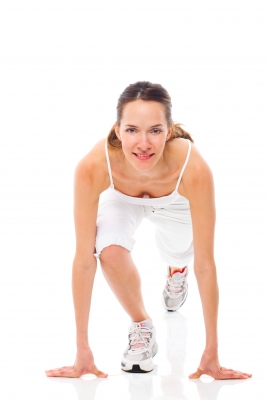- Cardiovascular Fitness - This reccomends that you follow the F.I.T.T. Principal, Frequency - Intensity - Time - Type. You should do 20 - 30 minutes of cardio 3 - 6 times a week at your correct intensity level. This ensures the most important muscle you have, the heart, is as strong as all the the other muscles in your body.
- Progressive Resistance Training - Resistance training should be done 3 times per week and encompass all the major muscle groups. For best results employ the assistance of a certified fitness professional. And when you do, demand that they have the appropriate education, such as a degree in a related field plus a nationally accedited certification, like N.S.C.A., N.A.S.M., A.C.S.M., I.S.S.A. etc... and have at least 500 hours of training experience (http://www.fitnessexperienceclubs.com/)
- Proper Food Intake - Implement a balanced and intellectual approach to your nutrition, considering factors such as lifestyle, leisure habits and occupation. Are youy active or sedentary? How often will you be working out and intensity levels at which you will be training? It is imperative to have goals such as fat loss (notice how I did not say weight loss) and muscle gain! Be specific with your goals. The more vivid you can paint that picture, the more likely you are to take ownership of your goals and outcomes.
- Supplementation - It is impossible to get all the nutrients that we nood from food alone, unless one decides to in excess of 4500 calories per day. And since the goal for most of us is to reduce body fat, 4500 calories is double to triple our needed caloric intake in a day. Since you will be training it is important to have the correct caloric intake, the right amount nutrienets, vitamins and minerals that your body will require.
- Accountability and Motivation - Develop a support system that will keep you on task for your goals! Find your signifigant other or family member to keep you motivated and vice versa. Enroll in a health club or hire a personal trainer. Have clearly defined goals, set up an impending event such as a vacation or marathon etc...
Be proactive in your approach to your fitness goals and make a firm 3 month commitment, be sure to stay on track and check your results every 30 days. Avoid the scale and just stay on point with your regiment and you will break bad habits and replace them with positive habits! After 90 days you will feel and look better and it will be easier to continue on your new fitness trend.
We at Fitness Experience would like to wish you and yours a Happy and Prosperous New Year!
Let Fitness Experience be the Solution to your New Years Resolution!
And just an FYI... Coming soon is our Annual Fat Loss Competition! Do you have what it takes to be a loser!? Drop in for details.






 Getty
Getty

